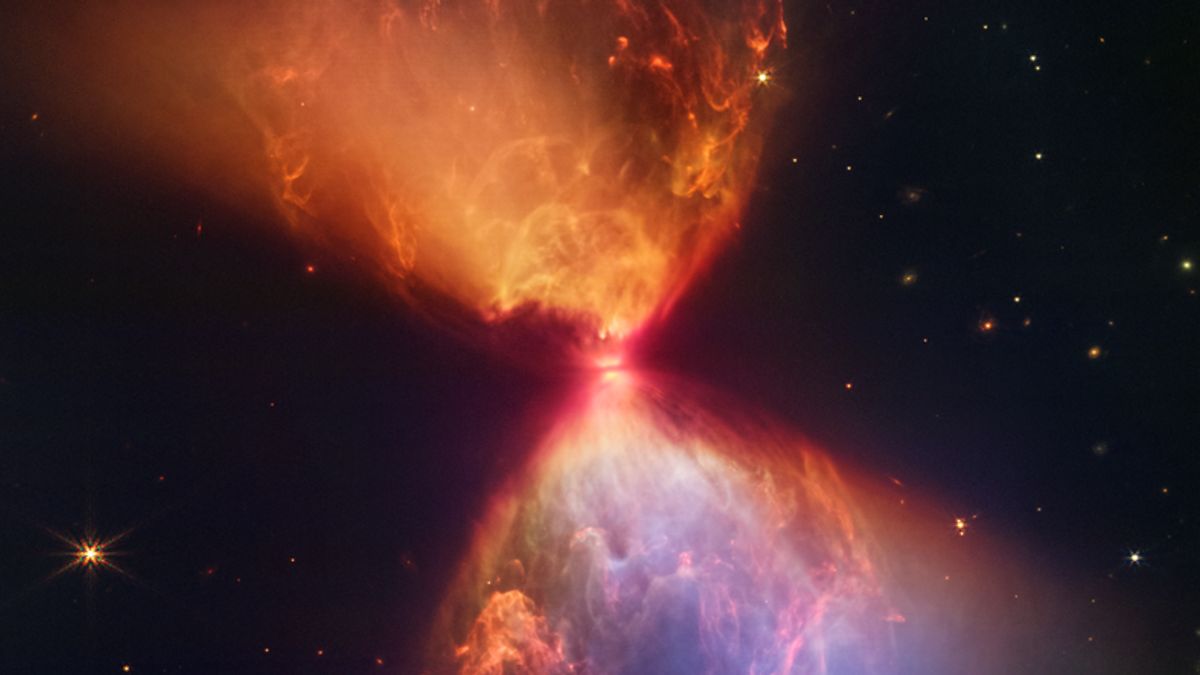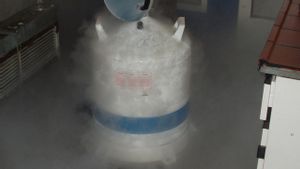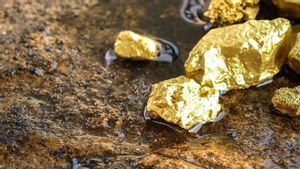JAKARTA - The James Webb telescope has just revealed a protostar feature that was once hidden in the dark cloud L1527. The natural phenomenon was captured by the telescope with the Near Infrared Camera (NIRCam), providing insight into the formation of new stars.
The lit clouds in the Taurus star-forming region are only visible in infrared light, making it the ideal target for the Webb Telescope.
The protostar itself is hidden from the view inside this hourglass-shaped neck. The most common feature in the region is blue and orange clouds, large-line cavities created when the material shot away from the protostar and collided with the surrounding matter.
The color itself is caused by a layer of dust between the Webb Telescope and the clouds. The blue area is the thinst dust area. The thicker the dust layer, the less blue light that can escape, creates orange pockets.
The Webb telescope also revealed a molecular hydrogen filament that had been shocked when protostars removed material from it. Guncangan and turbulence hinder the formation of new stars, which should have formed throughout the clouds.
As a result, protostars dominate space, taking a lot of material for themselves. Despite the chaos caused by L1527, it's only around 100,000 years old and relatively young.
Given its age and brightness in far-infrared light, L1527 is considered a class 0 protostar, the early stages of star formation.
Protostars like this, which are still confined in dark clouds of dust and gas, still have to take a long way before becoming fully mature stars.
L1527 has not produced its own energy through hydrogen nuclear fusion, an important characteristic of the star. Its shape, although largely round, is also unstable, is in the form of small clumps of gas, heat, and swelling somewhere between 20 percent and 40 percent of the solar mass.
Launching the NASA page, Friday, November 18, as the protostars continue to gather masses, the point gradually compresses and approaches stable nuclear fusion. The scene shown in this picture shows L1527 doing that.
The surrounding molecular clouds consist of dust and dense gas pulled to the center, where the protostars live. When the material falls, it rotates around the center. This creates a solid material disk, known as an accretion disk, which feeds the material into the protostars.
When it gains more mass and compresses further, its core temperature will rise, eventually reaching a threshold to start nuclear fusion. The rock, seen in the image as a dark ribbon in front of a bright center, the size of the Solar System.
Given its density, it's not unusual that most of this material clots, the beginning of the planet. In the end, L1527's view provides an overview of what the Sun and the Solar System looked like when they were babies.
The English, Chinese, Japanese, Arabic, and French versions are automatically generated by the AI. So there may still be inaccuracies in translating, please always see Indonesian as our main language. (system supported by DigitalSiber.id)








